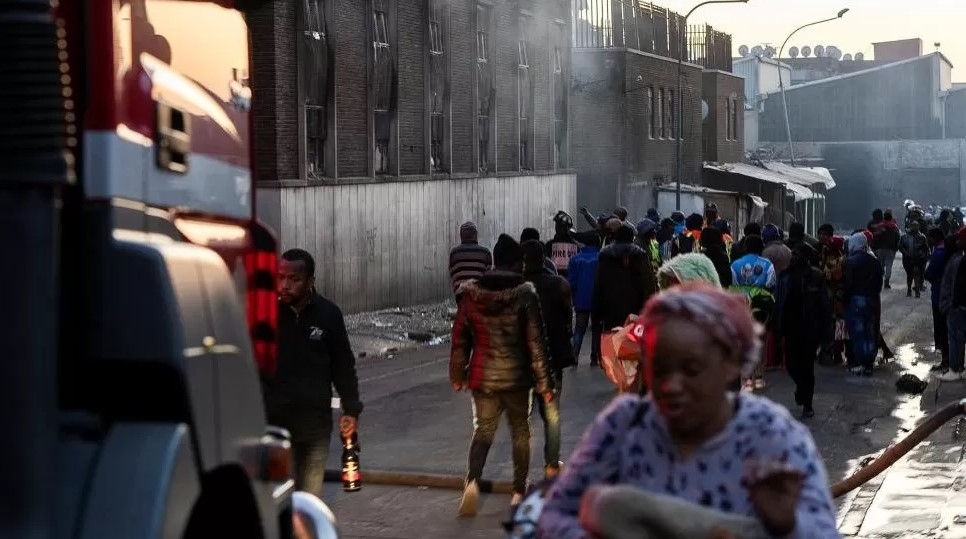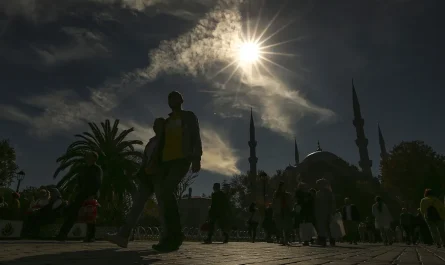According to South Africa’s President Cyril Ramaphosa, a devastating fire in Johannesburg’s inner city was “a wake-up call” for the country.
A fire that broke out in a building that was being inhabited by homeless people resulted in the deaths of seventy-four persons, including 12 children. The building had five stories.
There were more than fifty more who were hurt.
Earlier, the city of Johannesburg acknowledged that it was the owner of the building, but it stated that cartels now occupied it. According to the authorities, it is now unknown what caused the tragic fire.
In a press conference that took place at the scene of the blaze, Mr. Ramaphosa stated that the blaze needed to be examined and that lessons should be learned in order to prevent similar tragedies in the future.
“It’s a wake-up call for us to begin to address the situation of housing in the inner city,” the leader of South Africa stated after the report was released.
According to President Ramaphosa’s explanation to the press, the structure was “hijacked” after the lease on it ended, at which point it had been utilized as a shelter for battered women and children.
A great number of homes and other buildings in the neighborhood where the fire broke out have been designated unsafe for habitation.
But despite the fact that their owners or the local authorities have abandoned them, these old blocks are nevertheless home to many families who frequently pay rent to the criminal gangs who are responsible for running them.
Undocumented migrants, primarily from other African nations, make up a portion of the population that makes use of the structures.
The term “hijacked” is then used to refer to the buildings, which do not have access to running water, bathrooms, or a legal link to the energy grid.
There is a persistent lack of housing in South Africa, and it is believed that there are 15,000 people living without homes in Johannesburg alone.
“Others jumped as well, but they did not succeed.”
What exactly is a “hijacked building” in the context of the fire in South Africa?
“We need to get on top of this and find effective ways of dealing with problems of accommodation, of housing, and of services in the inner city,” Mr. Ramaphosa stated.
In addition, he praised the efforts of the emergency services personnel who arrived at the scene ten minutes after the fire was reported.
The municipal manager of Johannesburg, Floyd Brink, stated that the fire displaced approximately 200 households and that “all efforts” were made to provide shelter for them.
Robert Mulaudzi, a spokesman for the emergency services, told the BBC that the fire had completely destroyed the structure, but that firefighters were able to rescue some of the people who were trapped inside.
He explained that the building had not been properly maintained, and as a result, improvised constructions and debris had made it difficult to search for and rescue anyone who were trapped inside.
A video that was uploaded by Mr. Mulaudzi to the platform X, which was formerly known as Twitter, displayed emergency vehicles such as fire trucks and ambulances parked outside of the building with charred windows.
Images taken at the scene showed several victims wrapped in blankets lined up next to the charred structure.
A woman who spoke to the media claimed that she was outside of the building looking for her daughter who is 24 years old.
“As soon as I heard the building was burning down, I knew I had to run here to come and look for her,” she added. “I knew I had to come and look for her.”
“Ever since I arrived here, I have been held in a state of suspense since I have no idea what is taking place. I don’t receive any indication, therefore I’m genuinely very nervous since I have no idea whether or not my daughter is still alive.
During his visit to the site, the Mayor of Johannesburg, Kabelo Gwamanda, announced that city officials will rehouse residents living in similar “hijacked” properties throughout the city so that such buildings might be converted into social housing. He stated to the reporters that “we are not going there with brute force,” and that instead, “we are trying to apply a sensitive strategy.”
When Mr. Gwamanda was asked if his administration would accept responsibility for the disaster, he responded by saying that the government was addressing the problem of cartels seizing buildings all throughout the city.
As a result of the fire, many people in South Africa have taken to social media to protest the online xenophobic attacks that some people have made against the people who were affected by the fire and those who survived it.



